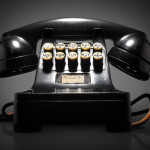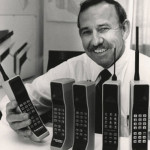Six Iconic Prototypes That Changed Our World

Thomas Alva Edison said, “Genius is one percent inspiration and ninety-nine percent perspiration.”
The following are among the one percent – and they changed our world.
Super Soaker
 Like most ingenious inventions, the super soaker came about purely by accident. Lonnie Johnson, an engineer at NASA’s Jet Propulsion Laboratory, was prototyping a water-circulation heat pump. When one of his experimental brass nozzles went kerplooey, he had an idea. He built an air pump shotgun using water instead of bullets. After seven years of thwarted salesmanship, his invention was bought in 1990 by Larami and sold as the Power Drencher. Two million were sold the first year.
Like most ingenious inventions, the super soaker came about purely by accident. Lonnie Johnson, an engineer at NASA’s Jet Propulsion Laboratory, was prototyping a water-circulation heat pump. When one of his experimental brass nozzles went kerplooey, he had an idea. He built an air pump shotgun using water instead of bullets. After seven years of thwarted salesmanship, his invention was bought in 1990 by Larami and sold as the Power Drencher. Two million were sold the first year.
Atari 2600
 The Atari 2600 was created under questionable legal circumstances. Magnavox owned the rights to any Atari hardware produced during the 12 months after July 1976. So Atari engineer Al Acorn migrated to the mountains of Grass Valley, California, where he worked with Cyan Engineering to build the console in three months for $500. In June 1977, safe from the clutches of Magnavox, Atari announced its invention and proceeded to revolutionize the 1980s.
The Atari 2600 was created under questionable legal circumstances. Magnavox owned the rights to any Atari hardware produced during the 12 months after July 1976. So Atari engineer Al Acorn migrated to the mountains of Grass Valley, California, where he worked with Cyan Engineering to build the console in three months for $500. In June 1977, safe from the clutches of Magnavox, Atari announced its invention and proceeded to revolutionize the 1980s.
Push-Button Phone
 The original 1948 push-button phone worked essentially the same as a piano. Bell Labs engineering wizards gutted a Western Union 302 rotary phone and installed 10 buttons and 10 metal reeds, like wires. Pushing a button would pluck a wire, producing a particular sound. Although ingenious, the technology was unable to cope with consumer demands until the solid-state electronics of the early 1960s.
The original 1948 push-button phone worked essentially the same as a piano. Bell Labs engineering wizards gutted a Western Union 302 rotary phone and installed 10 buttons and 10 metal reeds, like wires. Pushing a button would pluck a wire, producing a particular sound. Although ingenious, the technology was unable to cope with consumer demands until the solid-state electronics of the early 1960s.
Moog Modular
 Electronic music was in its infancy when Bob Moog asked Herb Deutsch to help him build a smaller, better music synthesizer. The duo assembled a Rube Goldberg labyrinth of circuits and oscillators and other bits of electrical magic. With the help of a 35-cent doorbell button, the two build an analog articulation synthesizer that would become the indispensable tool of everyone from Stevie Wonder to Dr. Dre.
Electronic music was in its infancy when Bob Moog asked Herb Deutsch to help him build a smaller, better music synthesizer. The duo assembled a Rube Goldberg labyrinth of circuits and oscillators and other bits of electrical magic. With the help of a 35-cent doorbell button, the two build an analog articulation synthesizer that would become the indispensable tool of everyone from Stevie Wonder to Dr. Dre.
Mobile Cell Phone
 The first cell phone cost $3,995. In 1973, Motorola unveiled the DynaTAC, a brick-sized portable phone that was built in a mere three months. Engineers worked furiously to scale the cell phone down from its original dimensions, 10 times the size, and eventually packed all the necessary technology into a 4.4-pound box.
The first cell phone cost $3,995. In 1973, Motorola unveiled the DynaTAC, a brick-sized portable phone that was built in a mere three months. Engineers worked furiously to scale the cell phone down from its original dimensions, 10 times the size, and eventually packed all the necessary technology into a 4.4-pound box.
The Apple I
 And, of course, no list of this type could ever be complete without including the Apple I, the first personal computer to truly grab the public’s attention. Steve Wozniak had the skills and Steve Jobs had the charisma. Together, they fundamentally changed society – and did so from their garage. They built their first order of 100 computers, priced at $500 each, in 10 days. An argument could be made that Apple has since conquered the world of electronics.
And, of course, no list of this type could ever be complete without including the Apple I, the first personal computer to truly grab the public’s attention. Steve Wozniak had the skills and Steve Jobs had the charisma. Together, they fundamentally changed society – and did so from their garage. They built their first order of 100 computers, priced at $500 each, in 10 days. An argument could be made that Apple has since conquered the world of electronics.
Did we overlook one? Let us know below!
